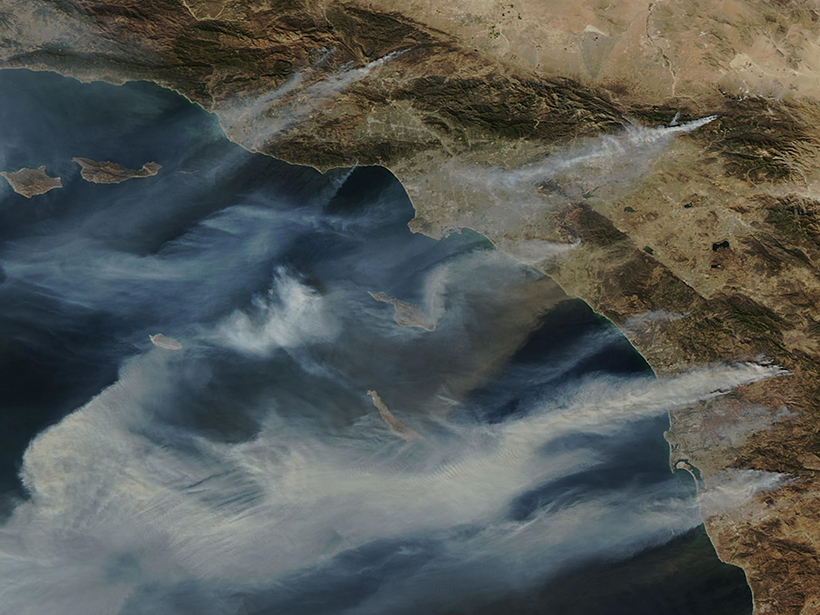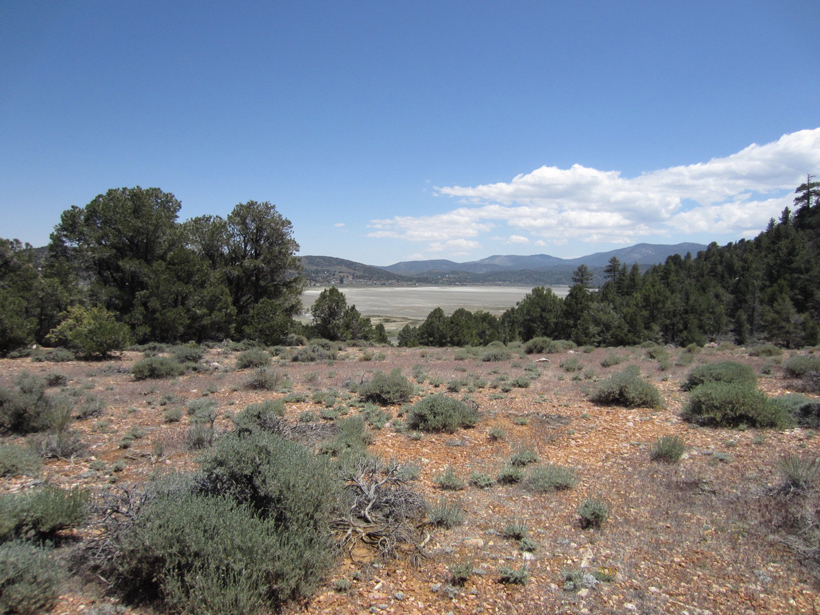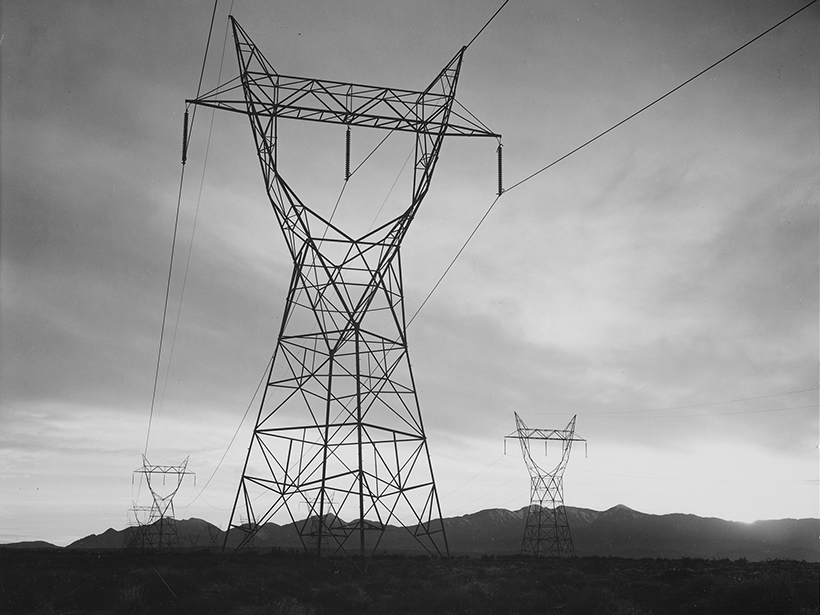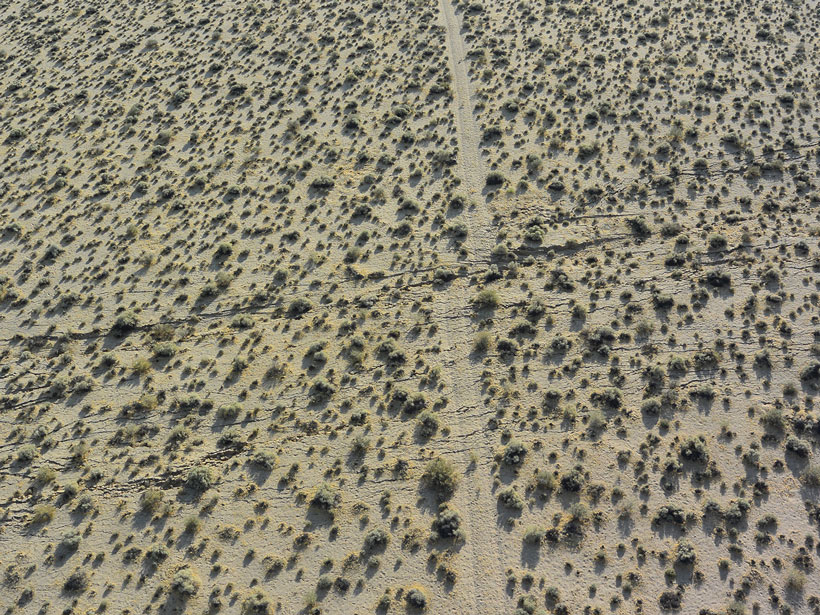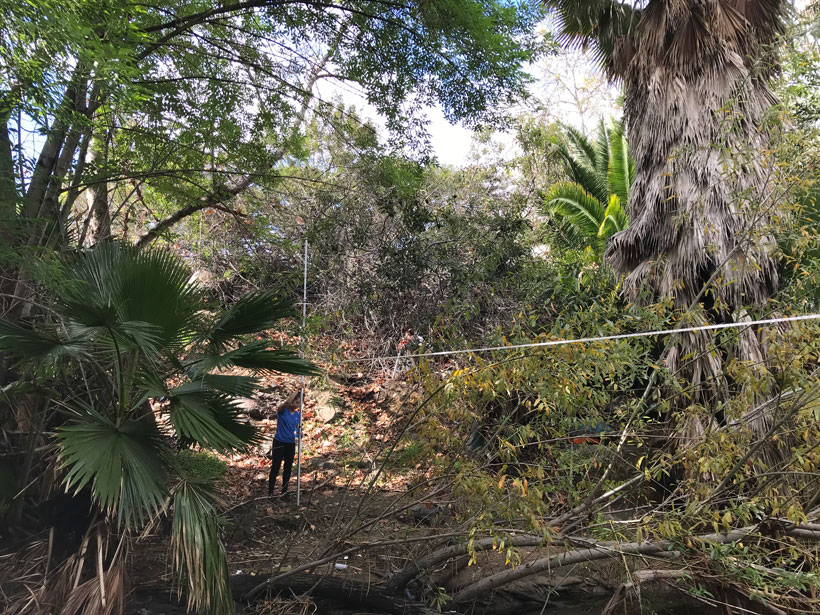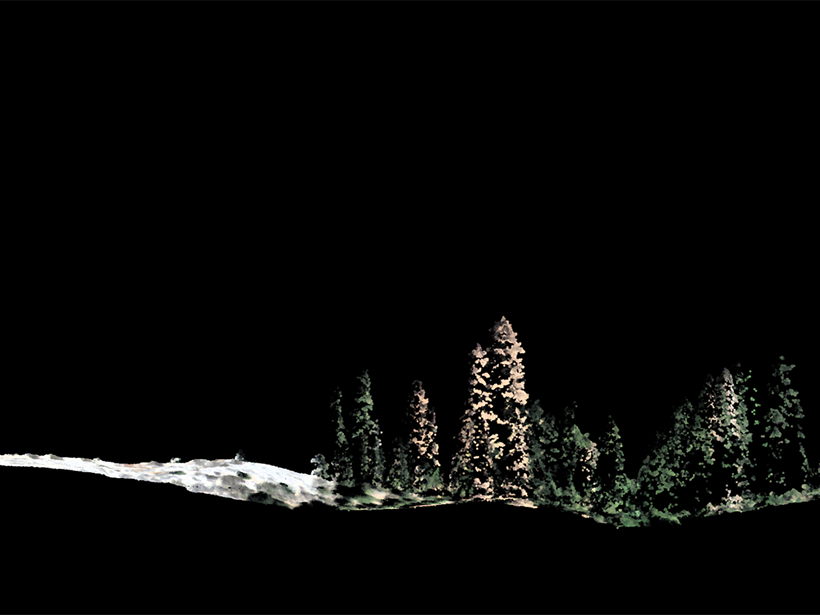Offshore oil- and gas-drilling platforms are rich habitats for fish, and removing them completely would result in a loss of over 95% of fish biomass, new research has revealed.
California
Santa Ana Winds and Wildfires Influence Air Pollution
Inhaling particulate matter is hard on human health. New research shows that Southern California’s Santa Ana winds can clear or exacerbate fine-particulate pollution depending on wildfire conditions.
Southern California Climate Change over 100,000 Years
Researchers used a sediment core from a lake in California’s San Bernardino Mountains to track the effect of climate on vegetation, fire, and erosion between about 120,000 and 15,000 years ago.
Cortes de Energía, PG&E y el Futuro Vacilante de la Ciencia
Mientras los legisladores debaten sobre los apagones como una medida paliativa para resolver el problema de los incendios forestales en Estados Unidos, la ciencia pende de un hilo.
Power Outages, PG&E, and Science’s Flickering Future
As lawmakers debate planned power outages as a Band-Aid to the nation’s wildfire problem, science hangs in the balance.
Scientists Scramble to Collect Data After Ridgecrest Earthquakes
Ground shaking in Southern California, including a magnitude 7.1 temblor, triggered a massive mobilization effort to collect seismological, geological, and geodetic data.
The Layered Legacy of Clyde Wahrhaftig
As the geologist’s beloved guidebook gets a digital makeover, his personal contributions to the field shed light on who he was as a scientist.
Iconic Palms Add to Fire Danger in Southern California
As fires burn across Southern California, researchers examine what role nonnative vegetation plays.
California Launches Nation’s First Earthquake Early Warning System
The country’s first publicly available, statewide warning system could give California residents crucial seconds to duck and cover before a quake.
The Bigger They Are, the Harder They Fall
New research tracking 1.8 million trees found that tall trees died at more than twice the rate of smaller ones toward the end of extreme and persistent drought.


